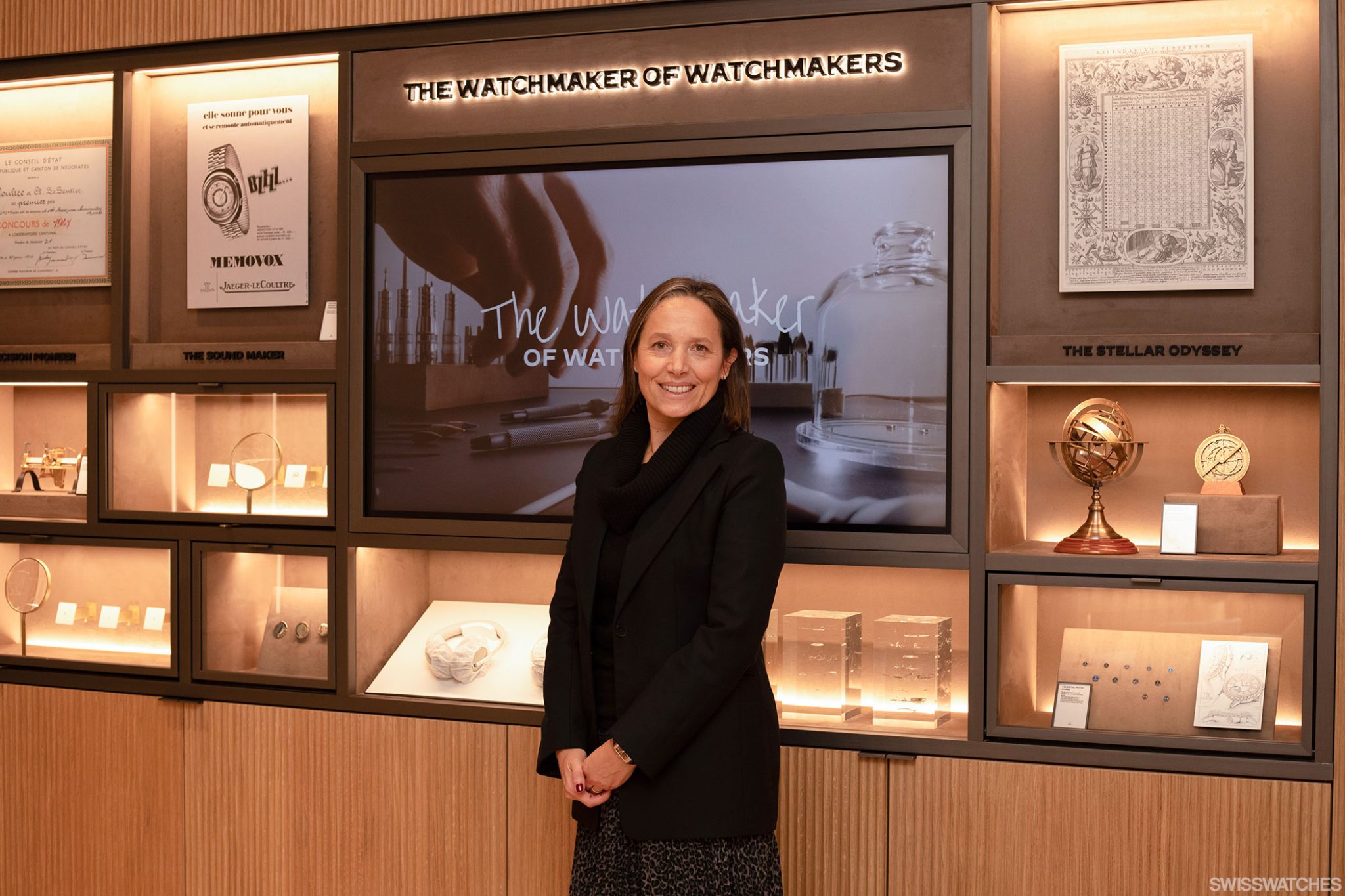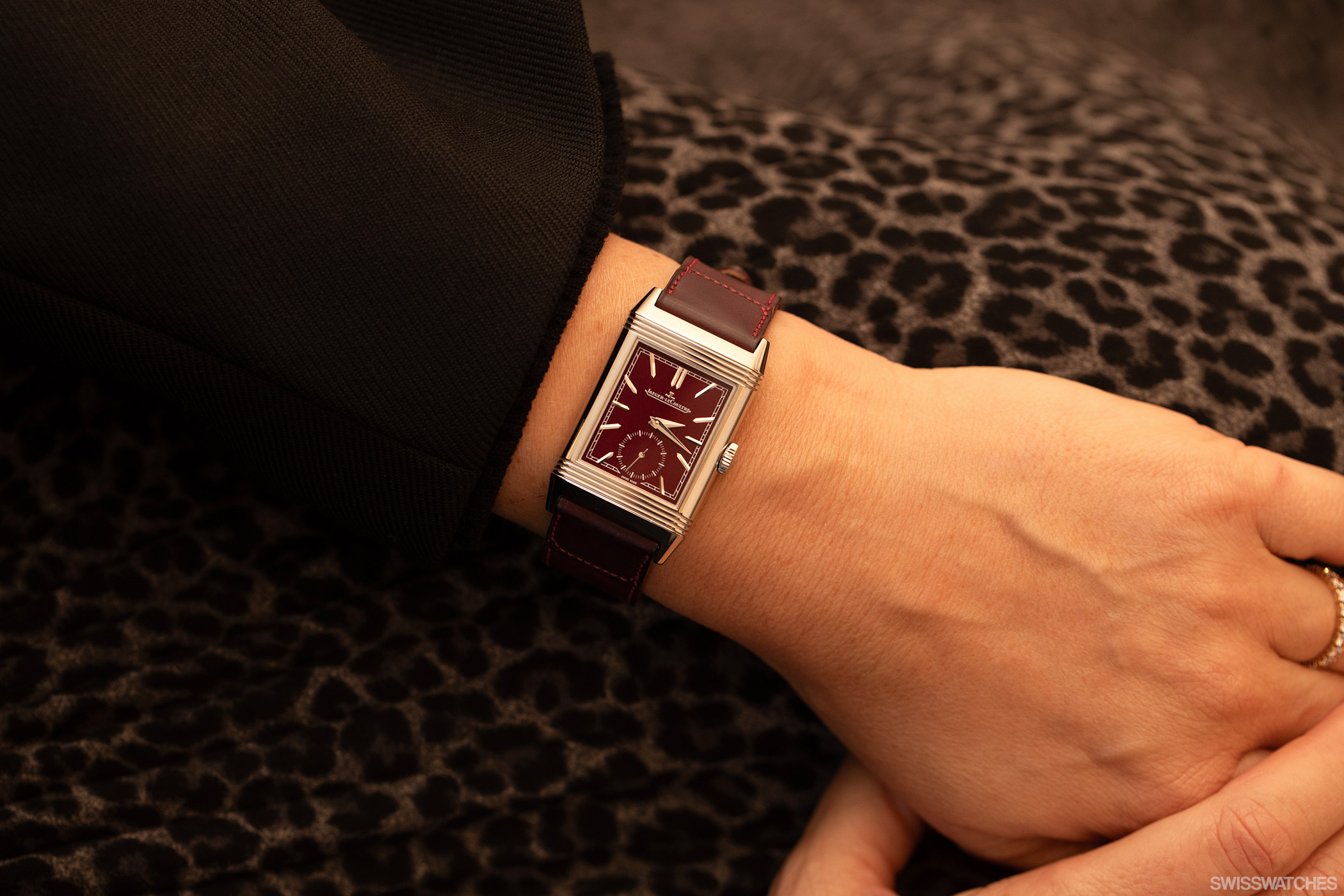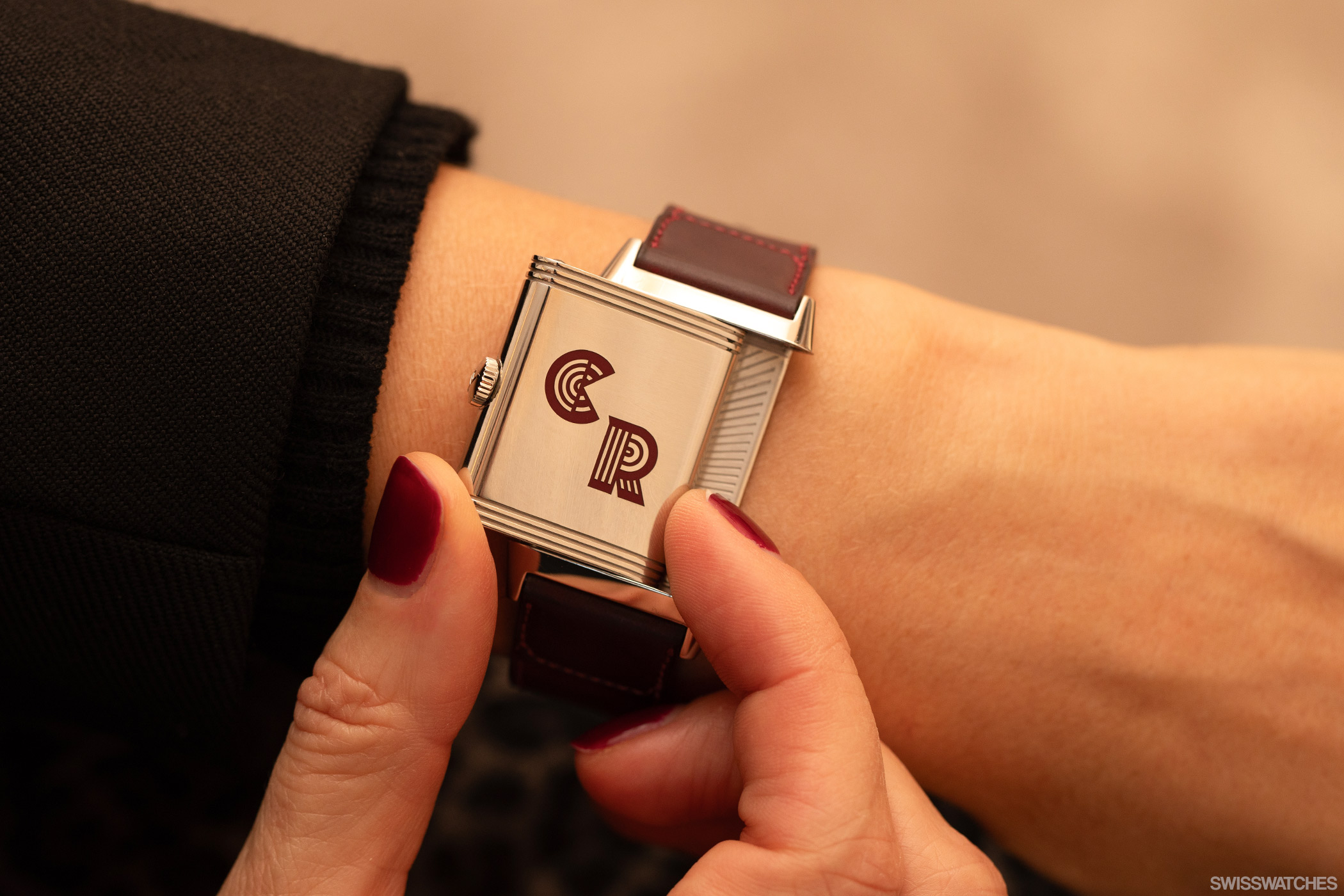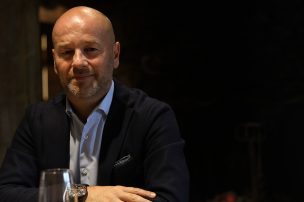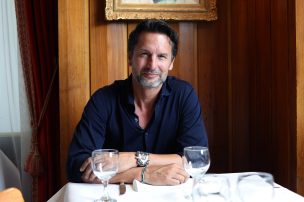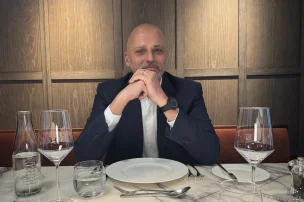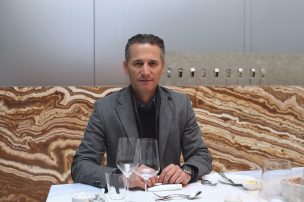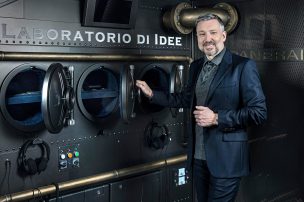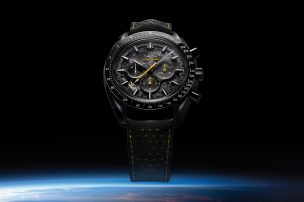
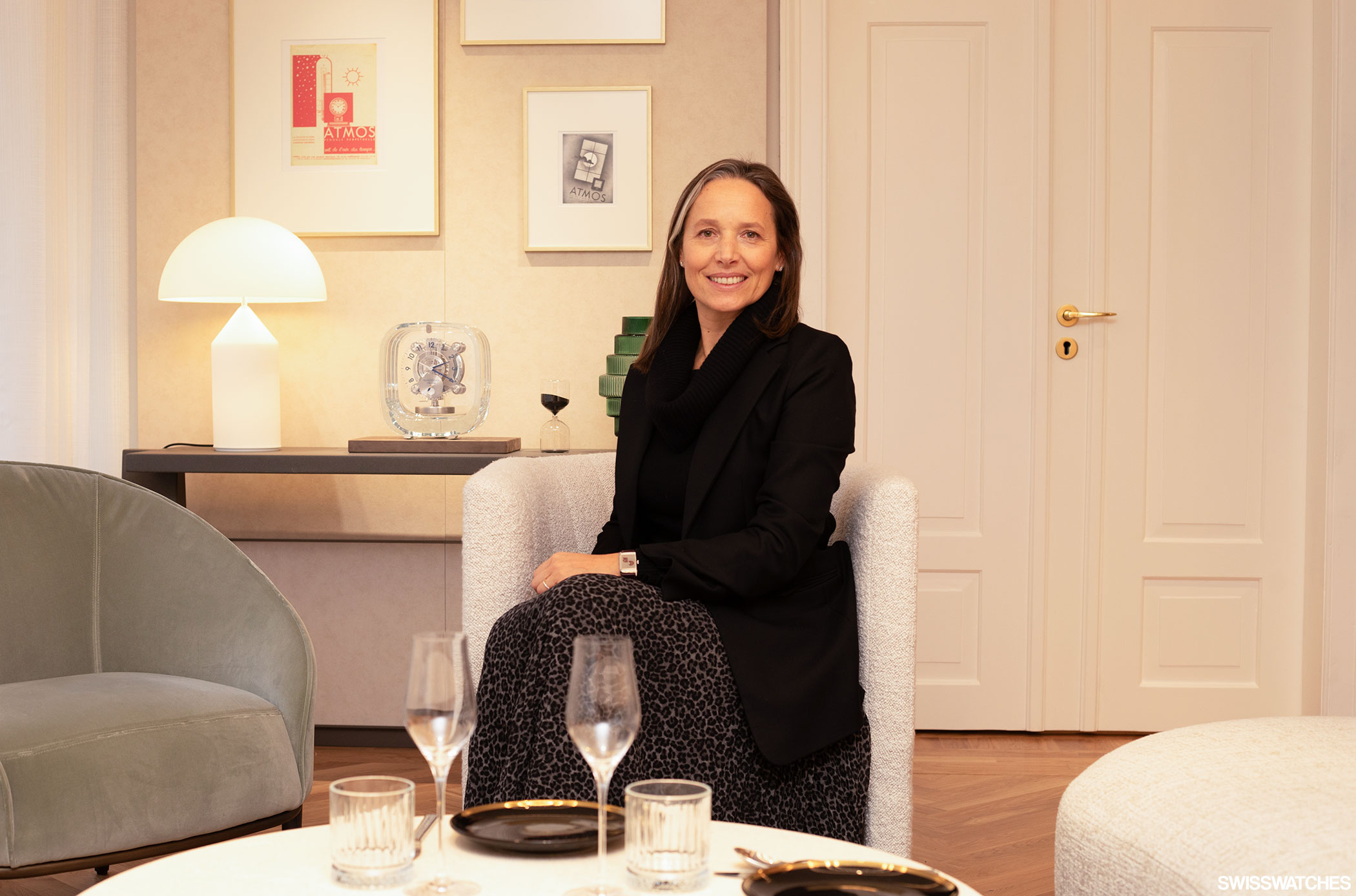
Lunch With: Jaeger-LeCoultre CEO Catherine Rénier
When you talk to Catherine Rénier about watches, you immediately sense the enthusiasm, deep respect and humility that the CEO of Jaeger-LeCoultre feels for watchmaking. We met Catherine Rénier in Munich on the occasion of the new boutique opening on Munich’s prestigious Maximilianstrasse, the world-famous shopping street that counts Chanel, Hermès, Ralph Lauren and many others amongst its wealthy tenants. We spoke to Catherine Rénier not only about the maison’s watchmaking (Jaeger-LeCoultre has developed over 1,400 calibres in its 190-year history), but also about the importance of a balanced network between e-commerce, monobrand and multibrand stores, a counterweight to the iconic Reverso and why Lenny Kravitz is the ideal brand ambassador.
What do mechanical watches mean to you? What watch are you wearing today, and which one do you wear the most?
I’m amazed by the constraints of the size and miniaturisation that watchmaking imposes on us. I see an object that is wearable, comfortable and can resist shock and water. I find watchmaking in general amazing. We need artistic objects like mechanical watches to balance our fast-moving world where people want to have everything overnight, in which the digital world is over-present. With its craftmanship and heritage, watchmaking brings important messages, and values.
The watch I’m wearing today is the one I wear the most. It’s a Reverso with one of my favourite colours – the Reverso Tribute Small Seconds in burgundy – and it’s the first watch under my era that I presented during Watches and Wonders in 2019. For me, it’s a symbol of my arrival in the maison and all of the work we have done for the Reverso since then. I gifted a blue one to my older son, a green one to my younger son, and this one will go to my daughter. So, it’s really my go-to watch.
You are now looking back at five years at Jaeger-LeCoultre. In terms of products, what has most surprised you in a positive way? And in terms of strategy, what worked out well and what didn’t?
What surprised me the most was the level of complexity in developing, constructing and making a watch. Things remain unknown up until the last moment, when everything has been tested. I believe that not everyone, even when you are highly educated about watches, understands the amazing work, demand, and standards that go into these timepieces. I mean, the complexity of the mechanism, the challenges of miniaturisation, and the fact that on top of that, it must be wearable, water resistant, shock resistant and long lasting. This was a big lesson, a big challenge, and of course, eye-opening for me.
And what did or perhaps didn’t quite work out the way you wished, or you would have loved to happen quicker?
Everything [laughs]. I mean some things do happen fast enough, but many – and sometimes not the most complex – components like a new metal bracelet or a new colour dial can still take years. So, of course, I would have loved to have had some magic doing things overnight! In terms of product strategy, what has worked very well for us is a focus on the Reverso collection worldwide with new complications that we are bringing back into Reverso, which had not been the case since the 1990s. The chronograph that we introduced this year is a totally modern reinterpretation of the chronograph from 1996, but not in terms of style. The Reverso has always has been the heart of the maison, but I think it needed a new spotlight, and this is what we’ve given it over the last few years with great success.
Is there something actually counterbalancing the popularity of the Reverso?
I think the maison is quite balanced. Reverso is historically a reference predominantly for European countries. But we also have the Master collection from the early 90s or the Rendez-Vous that was launched in 2012, and both have been extremely successful as well. Polaris is newer, so still developing, but growing strongly. And of course, we’ve been focusing on high watchmaking, helping to accelerate that segment. Like haute couture for fashion, this product collection is at the heart of our creativity and innovation.
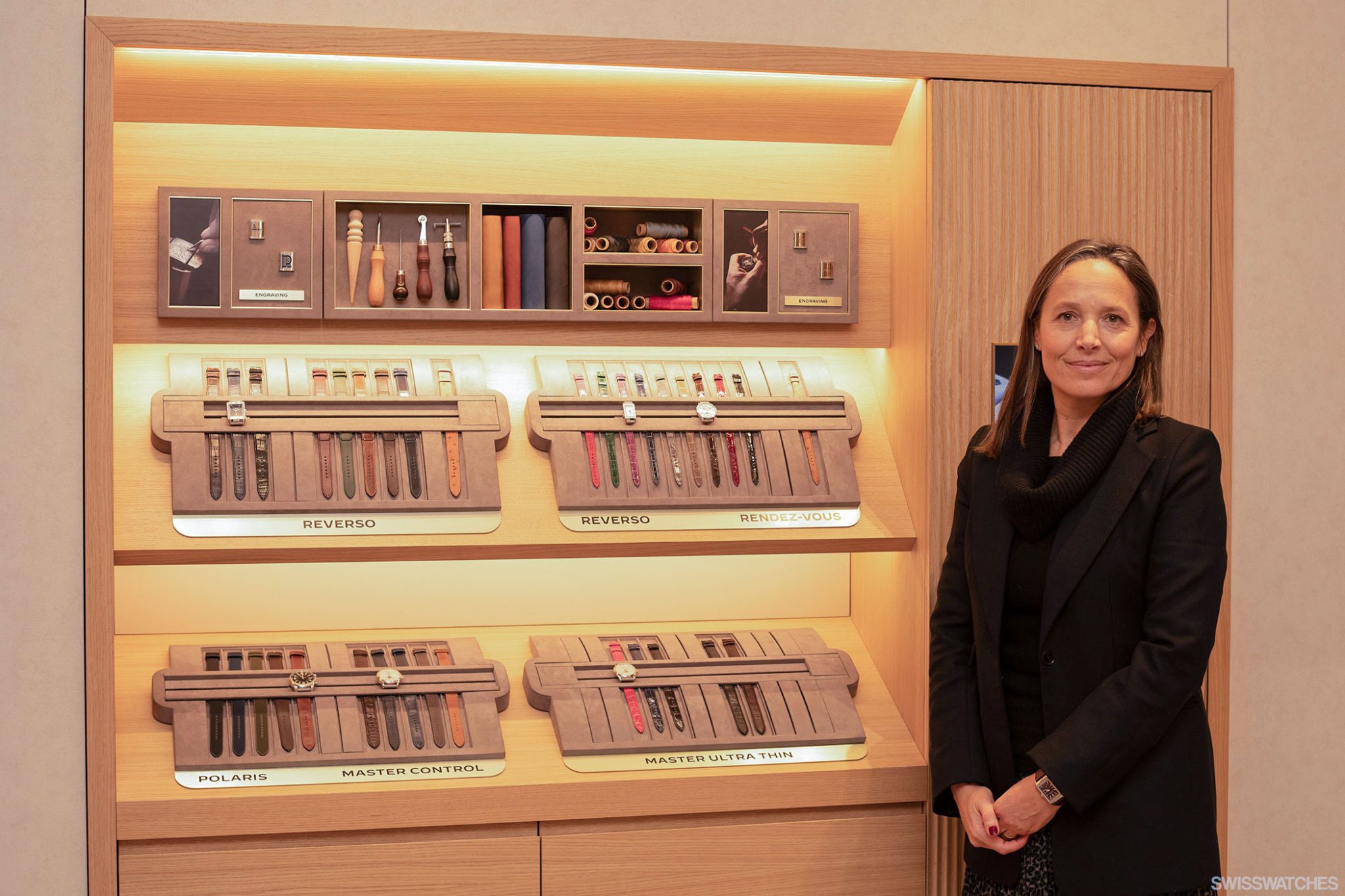
It’s very interesting to observe the development of the Polaris in recent years. You have now implemented more complicated models like a Perpetual Calendar, and you recently released more sporty looking chronographs with a grey dial. Is the Polaris also a platform for Jaeger-LeCoultre to play with complications, just as you started doing with the Reverso?
The maison primarily expresses its high watchmaking through the Gyrotourbillon and the Reverso Quadriptyque. The Polaris remains a mid-range complication with the Chronograph and Perpetual Calendar models that we introduced last year. We’ve elevated the Polaris collection with two developments: first, the Perpetual Calendar, which was a very important and key milestone. It has been very well-received and put a whole new spotlight onto that collection. The second development is indeed the lacquered gradient dials that you can now find in the Chronograph. I think it gives the Polaris its own story within our portfolio, with these coloured dials, extremely qualitative with the gradient effect and a twist of modernity with the rubber strap that makes it a sporty looking elegant watch. As mentioned, the Polaris is developing and growing very strongly; it was relaunched five years ago, so there is still a long story to be written.
In the past few years, we have found that watch brands have streamlined their collections to only a few core products, in order to be more distinctive for customers. At Jaeger-LeCoultre you have quite a vast portfolio, from sports watches to Haute Horlogerie. What have you changed since you started at Jaeger-LeCoultre?
We have the Reverso as an icon that we’ve been supporting worldwide. So, it has become a voice and a face in Europe and beyond. We have the Master, the Rendez-Vous and the Polaris. These were the four pillar collections when I joined the maison. We’ve been streamlining the number of references, not diluting each collection with many limited editions. We are really focused on building strong pillars that will last through the ages. So, each collection has seen key product launches over the last five years: for the Polaris, for example, it has been the perpetual calendar; and for the Master, it has been the calendar and chronograph calendar. These two have been very well-received and they are well-established for the years to come. For the Reverso, it’s the coloured dials and this new chronograph that mark the beginning of a story of complications in the Reverso collection. For the Rendez-Vous, it is the higher end of the spectrum that we have animated, with some complications and Métiers Rares pieces.
You have tackled the rising CPO trend with a very charming idea, launching ‘The Collectibles’. Is this you joining the trend or is it a unique Jaeger-LeCoultre approach?
It’s slightly different because the CPO watches tend to be on a shorter time frame. It’s purely second hand. For us, The Collectibles is really heritage brought back into vintage watches, with very little volume because it takes time to source the watch and of course to restore it. The idea behind this project is to pay tribute to the emblematic calibres that we have made over the years. We have a portfolio of 1,400 calibres, making movements for us as well as other maisons. So, we thought it would be nice to handpick 17 of these calibres and offer them within The Collectibles. These pieces range from the 1920s to the 1970s, as this was a particularly fruitful period in watchmaking. At the time, watches were tools that you would wear to support you while diving, or to remind you about your parking time, for example. Watches were the digital tools that we have today. They featured useful functions that fostered innovation.
With The Collectibles, we buy the watches on the market and bring them back to the manufacture where we can refurbish them in our restoration workshop using blueprints from the time. In the end, it’s a couple dozen pieces in every capsule collection. But it’s something that makes us proud because it’s really bringing back the watches to where they were born, where they were initially made. That’s what being a fully integrated manufacture with such a history in calibre making is all about.
Will ‘The Collectibles’ project be continued and extended?
It will continue under the same principles. We might extend the selection of calibres, but we only started a year ago. We’ve done two capsule collections and I think there are still opportunities to celebrate these 17 pieces that we handpicked so far.
What have you learned so far from the project? Does it influence your new products in any way?
For me, it has been an eye-opener regarding the history of watchmaking. When you look at the calibre-making history at Jaeger-LeCoultre, you see that we have contributed to key moments in watchmaking history.
I’ve re-discovered all those fabulous times through Jaeger-LeCoultre’s Collectibles, and I have learned to love these pieces, like the Memovox Parking for example. They are fantastic pieces, but to reproduce them today would be very daring. But who knows, maybe it will give us ideas. We have got such creativity and ideas for the future – turning to the past with respect, but still paving our own way.
You have still ten years until a very big anniversary.
Exactly right. Although, I can tell you, we are already working on the developments that will be marking that moment. Our idea is already on paper and we are already mapping it.
You have just opened the new boutique in Munich – your first mono-brand boutique in Germany. Why is this location so important to Jaeger-LeCoultre? What are you offering in boutiques that a dealer does not or cannot offer?
For me, it’s a natural development of our presence in the market. We have been in Germany for a long time. And I believe today’s watch lovers have many ways to learn about brands and watches. We find our clients to be very educated. So, when they come into a store, they very often know already exactly what they want and what they are after because they have done their homework. So, coming with our own boutique means that when they push open the door, they want to go further into Jaeger-LeCoultre’s universe. And this is what we offer. A boutique enables us to go deep into what Jaeger-LeCoultre stands for in terms of innovation, craftsmanship, personalization, history and calibres. We bring a little of the manufacture into the boutique. On the second floor, we have an exhibition area that we are going to bring to the markets on a rotating basis. There is always the need for the very educated German clientele, who are passionate about watches, to go deeper. Our boutiques are important to us because they allow our clients to go as deep as possible – unless they come to the manufacture, which of course is still a long trip.
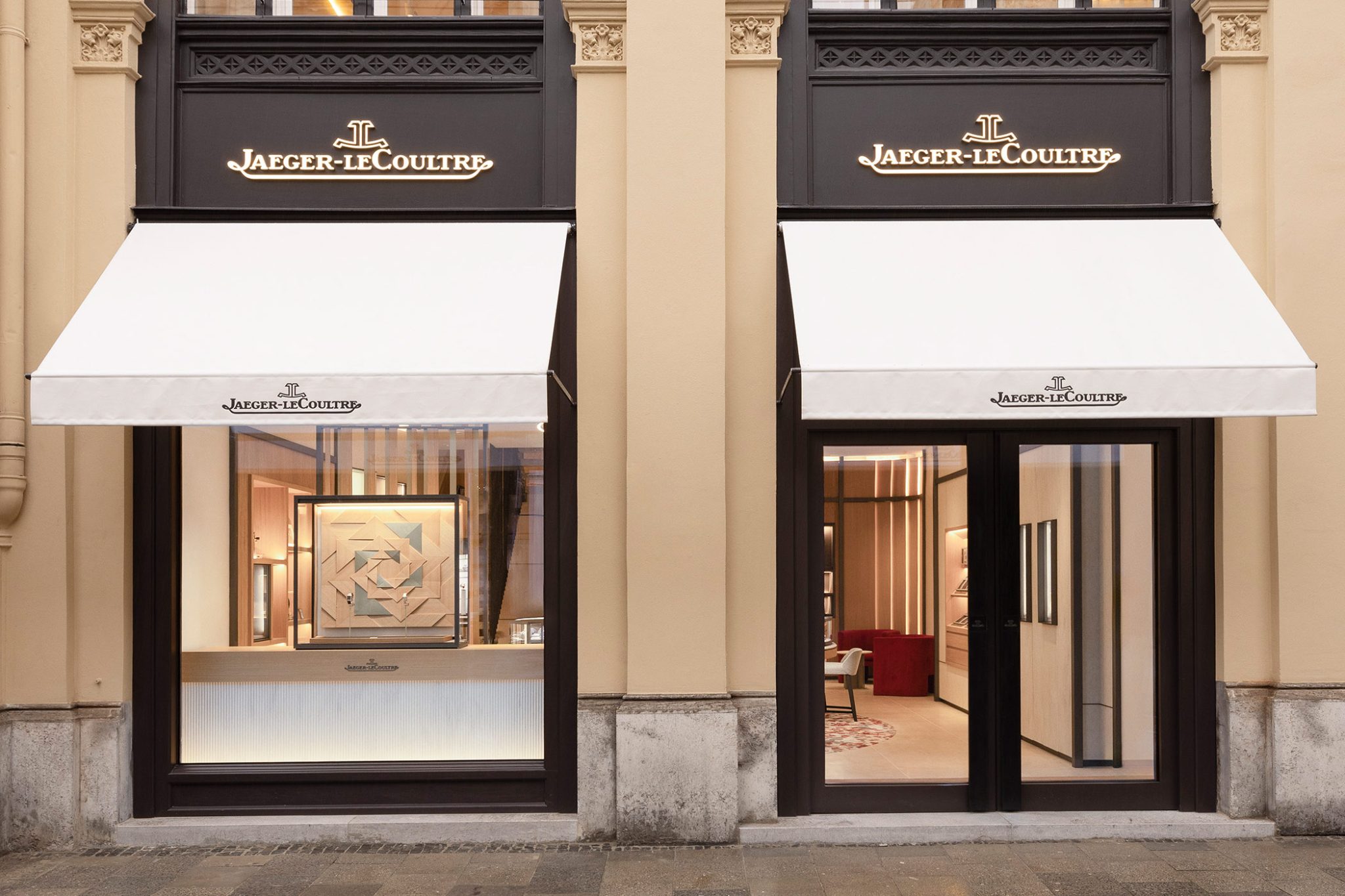
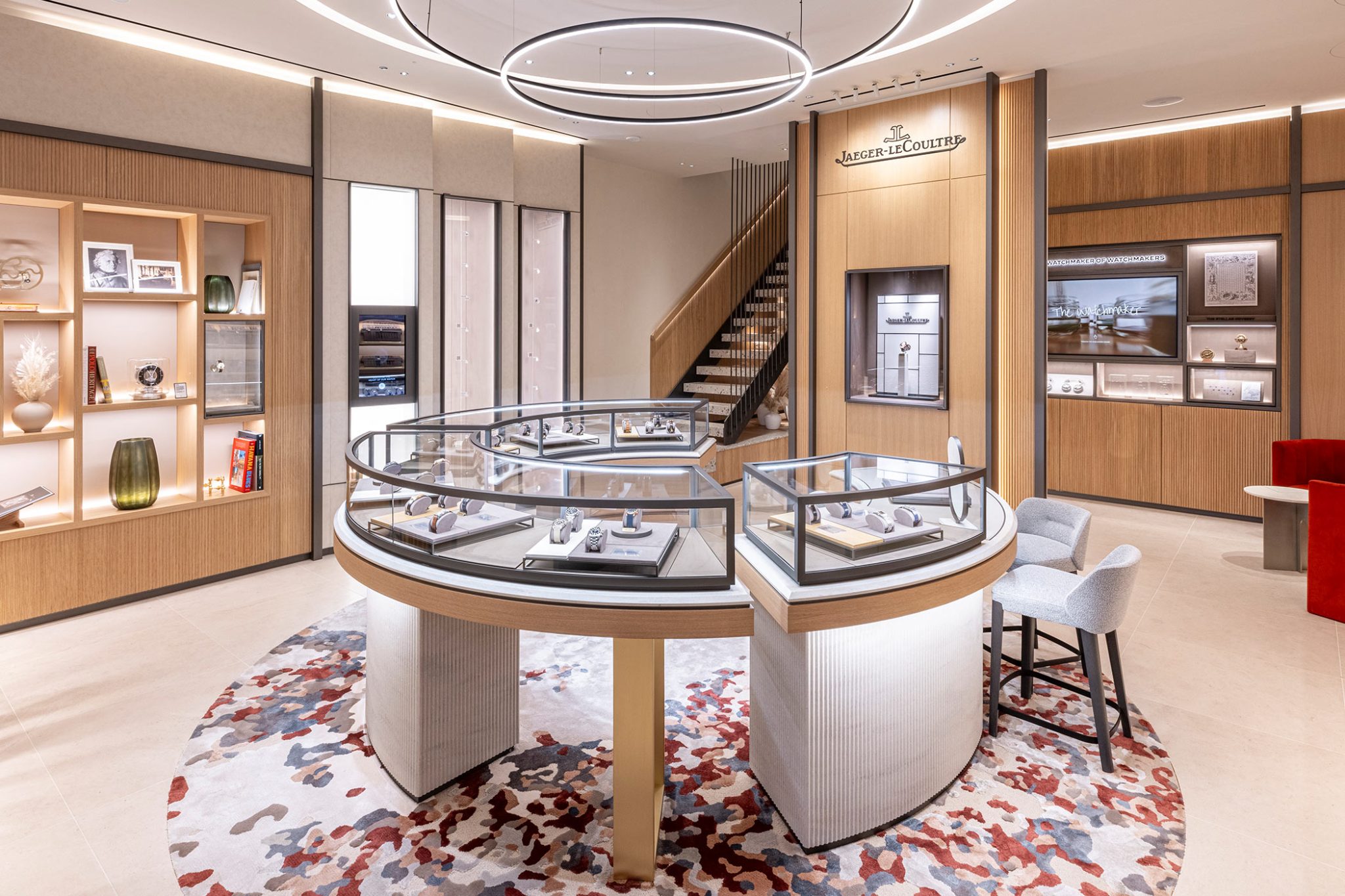
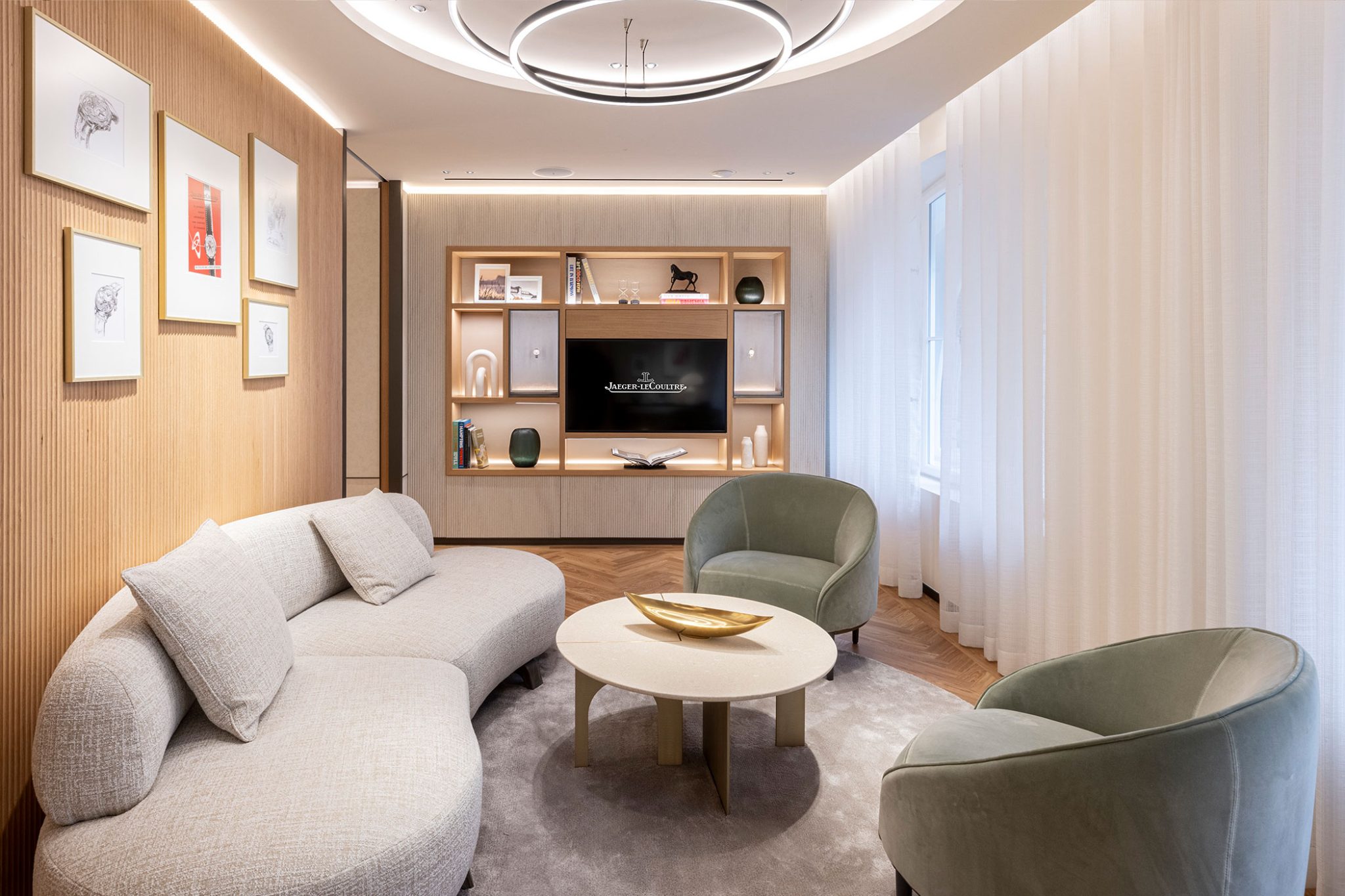
What is the perfect ratio between mono-brand boutiques, retailers and e-commerce? And what are your plans for the future?
I think e-commerce is a very nice service, and it’s one that we have been offering pretty much worldwide for a long time. It was very useful during the pandemic, obviously, to have the ability to still connect with clients despite our stores being closed. We primarily see online as a service that is there for convenience. The customers will go online, do research, read, go deeper on our website, come to a boutique or a multi-brand store to have a look around. And then, when they make their choice, they can make a purchase in store. Or if it’s a moment outside our opening hours, then they can buy online and do so when they want, from where they want. So, in the end, e-commerce is not an objective to grow exponentially. It’s a convenience and service for our clients to be able to access Jaeger-LeCoultre anytime, anywhere. And we have an amazing website that is very in-depth and very storytelling-focused, where you can find all our stories and collections. We have made it as convenient as possible for our customer.
Are mono-brand boutiques the only path to the future for Jaeger-LeCoultre, as is the case for some other brands?
No, we have a very balanced network. Sometimes it depends on the geography and the history of the market. We need our boutiques for the experience, e-commerce for the convenience and service, and multi-brand stores for the history and the relationship. But when you go to some regions like the Middle East, you hardly have multi-brand stores. So, the geography also varies based on how the market itself has developed, rather than depending solely on Jaeger-LeCoultre.
In the past few years, you have initiated public exhibitions, workshops, and collaborations with artists to leverage your claim as ‘The Watchmaker of Watchmakers’. Is this also your approach to reach and speak to a younger audience (Gen Z)? What other factors play roles in your strategy to reach the next generation?
The thinking behind it is quite straightforward. I mean, today, you do not necessarily need a watch. I believe it’s our duty, for the future of the maison and the industry, to educate. The world of watchmaking has occasionally been a little closed up for collectors and, you know, copycatting what everyone is doing. That’s not the future. So, what we’ve decided to do is promote our creativity and to write our own story. That’s why we refocused on Reverso. Most watches are round. Our icon is rectangle. Guess what, the most-worn digital watch in the world is also rectangle, so it must be somewhat of a convenient shape. And we also decided to educate the public with our exhibitions, opening up the manufacture to them. If you want to learn more about wine, you take wine classes. If you want to learn about watchmaking because the craftsmanship is amazing, then come and visit our manufacture with your family. Whether you buy a watch or not is not the point. It’s about engaging people. But in general, it enables watches to be seen for what they’re worth: the craftsmanship, the heritage, the invention, the complexity, the passion, the people and the work behind it.
Some may not be interested in the technical expertise. So, what is it to buy a watch today? It’s to bond; to have an emotion with the object, just like when you buy art. We’ve brought this dimension into our strategy as well, working with artists in our ‘Made of Makers’ program, in which we engage with musical and digital artists to see their interpretation of our world. And for me, this engagement can open the door to a wider audience.
Finally, we’ve reworked all our masterclasses into a full other spectrum that we call the Atelier d’Antoine discovery workshops, inspired by our founder Antoine LeCoultre. The discovery workshops blend academic education and hands-on experience in a dynamic format that encourages interaction. We currently have The Reverso Discovery Workshop, The Sound Maker Discovery Workshop, or The Stellar Odyssey Discovery Workshop.
Then we have the traditional masterclasses for watchmaking (movement assembly), enamelling, or engraving. The way we want to position ourselves is to talk about craftsmanship and thus open up an audience as broad as possible. And of course, talking about Gen Z, you will find us on social media with the proper format, the proper content, all while expressing modernity in a way that belongs to us. We don’t try to be modern like a sneakers brand. We are modern, yet we express ourselves in our own way – in a timeless way, because we are not about fashion, but rather about something that will last through generations.
That brings us to a very good point. Why are ambassadors important to Jaeger-LeCoultre? Why is Lenny Kravitz the ideal brand ambassador?
I believe ambassadors can be regarded as accelerators of understanding, because watchmaking can be seen as a total collector’s world by some people. And then suddenly you bring a face to it, you personify, you embody the watch being worn, and you create a surprise effect (Lenny Kravitz is wearing a tourbillon watch). And guess what? He is a passionate watch collector, and he talks about watches amazingly. This means there is a connection, which is what advertising is all about. You know, behind that image is a very long story of a 190-year-old maison. But the image must create a moment that people will remember, and it should also arouse their curiosity. And then everything I told you earlier unfolds: you go online, visit our website, and maybe visit one of our stores. Lenny Kravitz is very relevant to our maison because he’s truly passionate and he’s someone that I hope will arouse the curiosity of many people – watch collectors or otherwise.
WWD Women’s Wear Daily has just listed you as one of the ‘50 Women in Power’, next to Dior CEO Delphine Arnault, Chanel CEO Leena Nair or Siliva Venturini Fendi. What influence does fashion have today on the watches of Jaeger-LeCoultre or the maison Jaeger-LeCoultre in general?
There is a common ground for maisons with a strong patrimony and craftsmanship. I consider high watchmaking to be at the same level as haute couture at a fashion house. Then they also have ready-to-wear – this is very similar to the structure of our collection. The big difference is the ready-to-wear follows seasonal and yearly trends. For us, our products can last forever. Our products have a timelessness that fashion doesn’t always have. Now, it doesn’t mean that we don’t evolve, because if you look at Reverso in 1931 and Reverso today, or the Reverso Chronograph in 1996 and the Reverso Chronograph today, they are not the same. Sometimes it’s tougher to start from an existing product and transform it without breaking its identity, than to start from a blank page. What fashion does is very difficult. You need to challenge yourself every six months. However, modernizing the Reverso without changing the Reverso means that you need to respect the past that made it successful, but you have to create its future. So, it’s also a very challenging exercise.
There is a growing top collector’s market. Does Jaeger-LeCoultre also produce unique pieces for collectors? Or do you offer individual changes on high complication models for collectors?
You have collectors of the Reverso Tribute Small Seconds and then you have collectors of the Hybris Mechanica watches. They are both very important to our maison because of their passion and love of what we do. When you talk about high watchmaking or the haute couture of Jaeger-LeCoultre, we are talking about very few pieces. We produce ten Reverso Hybris Mechanica Calibre 185 (Quadriptyque) worldwide. There are also only ten units of the Reverso Tribute Enamel Hokusai that we just introduced. So, it’s very few pieces for the very few people who are the fastest to raise their hands. These pieces are sometimes gone within just a few days.
What direction is the watch industry headed towards?
You know, we always keep in mind the long-term view of what we do, meaning what we are building today is going to be relevant in five years or in ten years. As a CEO of such a historical maison as Jaeger-LeCoultre, I have that responsibility. You can have the quick wins. We could do many limited editions and be very opportunistic, but our priority is to build something that will last. When they might do The Collectibles in 2080, I hope they’ll pick the greatest number of models from my era [laughs].
I think that creativity will probably prevail over the massive volume because in my opinion, watches are becoming more like objects of art than a common tool. Even today, you have a lot more on your phone than you will ever get in a watch. So, let’s be creative. Let’s build strong, relevant icons and look for the best in terms of performance and value, rather than massive volume that may not last forever.
I believe not everybody will survive, as it’s a very competitive and over-branded industry. You have to be relevant to the industry, and bring something to it that will make it last. Also the quality of your relationship with the clients, the relevance and creativity of your products, and your communication will make the difference. You don’t gift a digital watch for a wedding, because in two years, what does it mean? It’s gone. A marriage lasts forever, but not a digital watch. So that’s where we belong – in these special, meaningful moments. And this is the path we need to continue to follow.
